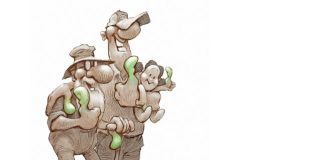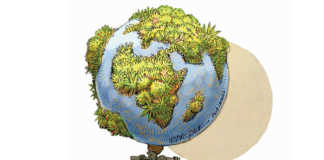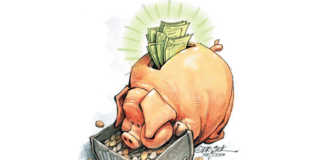
In a period riddled with disruptions in both the global and the domestic environment, the agriculture sector was the most consistent contributor to GDP growth in 2020 and 2021.
Over the past 18 months, however, challenges in the global environment have escalated as the war in Ukraine, the energy crisis, and persistently high inflation have threatened to derail the global post-pandemic economic recovery.
Read Fund aims to boost regenerative agriculture
Risks remain elevated, particularly in light of recent difficulties in renewing the Black Sea Grain Initiative.
Furthermore, South Africa’s agriculture and agro-processing sectors have had to deal with the implications of an animal health system that is threatening to collapse, crumbling road and water infrastructure, congestion at the ports, and a national electricity crisis leading to severe load-shedding and unplanned blackouts.
These factors have tested the sector’s resilience to the extreme and, with approximately 50% of revenue dependent on exports, are raising concerns around the sector’s competitiveness.
Grain drain
Much of the growth since 2020 has been underpinned by the field crop sector due to the rare combination of near-record harvests and high prices, which were underpinned by global factors.
In 2022 however, the sharp increase in input costs constrained GDP growth despite strong revenue performance. Looking forward, prices of the main summer crops will continue to trade at export parity in the near term, which implies that they will follow the global downward trend.
The same holds true for wheat, where prices tend to trade at import parity levels. This implies that margins will become tighter over the next few years, requiring continuous innovation to remain on top of the productivity curve.
Successful producers will be those who reinvested into technologies that improve resilience, particularly in light of ongoing energy challenges.
Declining field crop prices will, however, provide much-needed relief for intensive livestock producers, whose margins have been strained by spiralling feed costs. However, meat demand is also under pressure.
Read Securing the future of meat production in SA
Low meat prices
The past three years have been difficult for consumers, and this is unlikely to ease in the short term because of a combination of weak economic growth, persistent high inflation and the resultant monetary tightening.
Industries that deliver mainly to domestic markets are more exposed, and prices of higher value products such as meat and dairy are more vulnerable to weak demand as consumers shift to basic staples when affordability becomes strained.
The effect of limitations in spending power has become exceedingly clear over the first half of 2023, when farm-gate beef prices in particular declined sharply.
Over the next few years, production volumes are expected to increase as herd expansion that occurred over the past three years starts to enter the market. Consequently, prices are likely to remain under pressure in the long term and enabling additional exports is a key priority to ensure sustainability.
In other meat sectors, such as pork and poultry, prospects for volume growth remain due to recent investments made to expand production. Following the signing of the Poultry Sector Masterplan in 2019, investments in excess of R1,5 billion have resulted in expanded production volumes and a consistent decline in import volumes.
External factors may also have contributed to the decline, but the industry’s relative competitiveness in the global arena improved.
Unfortunately, the current energy crisis could negate many of the gains achieved. These production systems rely on controlled environments and constant power supply is critical.
The Bureau for Food and Agricultural Policy (BFAP) estimates that for every hour of load-shedding, running diesel generators scales energy costs to more than double that of the current Eskom tariff.
These additional costs occur throughout the value chain and contribute substantially to persistently high food inflation.
Horticultural consolidation
The horticulture sector has also benefitted from significant investment over the past decade to expand production. The long-term nature of production however implies that produce takes longer to enter the market.
When it does, the need for additional volumes of shipments comes up against global disruptions in the shipping industry and domestic challenges with respect to port capacity and efficiency of operations – a perfect storm that weighs on prices and in many instances also influences quality, jeopardising the added employment and foreign revenues.
Thus, the baseline projects a significant slowdown and consolidation in area under production, in some cases even a decline in the short term.
Given the substantial share of young trees already established and yet to enter full production, alleviation of current price pressure may take many years, despite the current buffer provided by the weaker exchange rate.
Challenges can be overcome
Given these reflections on the challenges in the individual subsectors, it’s not surprising that the 2023 BFAP Baseline projects that, despite the sector’s resilience, agricultural growth will come under pressure over the next few years.
Real agricultural GDP is projected to decline by 1% in 2023 and trend downwards for several years as global prices continue to normalise, reducing revenue in the field crop sector in particular.
Growth is only expected to return to a positive trajectory midway through the 10-year projection period, when the electricity crisis is assumed to start improving as the effects of investment into private generation capacity start to bear fruit.
This results in improved economic growth projections, albeit only modestly, and while agriculture is projected to return to a positive growth trajectory, growth is slow and well below the potential highlighted under the Agriculture and Agro-processing Master Plan.
Given the current risk profile both globally and in South Africa, however, the Baseline projections are subject to higher-than-normal levels of uncertainty.
To conclude, while significant, the current challenges facing the sector, and indeed the South African economy, are not insurmountable but they will not solve themselves. BFAP has over the years highlighted a number of factors that are critical to turn the tide.
These include the need for a stable and conducive policy and investment environment, comprehensive infrastructure development and services, including electricity, roads, and water, with well-functioning municipalities, efficient farmer support programmes, and complete and effective state services.
Despite an abundance of well-constructed growth plans in recent years, implementation has been sorely lacking.
As such, the 2023 Baseline represents a call to action – decisive action to overcome imminent challenges and forge a sustainable future for the entire agriculture and food value chain, from an economic, environmental and social perspective.










